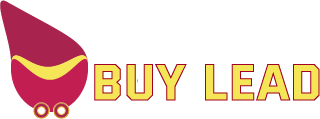In today’s fast-evolving digital landscape, static Is It Possible logos — while still important — are increasingly complemented by animated logos that bring brands to life. Many businesses are asking: Is it possible to create animated versions of my logo? The answer is a definitive yes. Animated logos have become a popular and effective way to enhance brand identity, engage audiences, and differentiate yourself from competitors.
This article explores what animated logos are, their benefits, how they are created, the different styles available, technical considerations, and whether an animated logo is right for your brand.
What is an Animated Logo? Is It Possible
An animated logo is a logo design enhanced with motion graphics or animation effects. Unlike static logos, animated logos incorporate movement, transitions, or visual effects that add dynamism and personality to your brand mark.
Animation can be as simple as a subtle fade-in or as complex as a fully dynamic 3D transformation. The goal is to capture attention, communicate brand values, and make your logo memorable in digital environments.
Benefits of Animated Logos Is It Possible
1. Increased Engagement
Movement naturally draws the eye. An animated logo grabs attention on websites, video content, and social media, making your brand more engaging.
2. Modern and Professional Appearance
Animated logos convey innovation and professionalism. They show your brand is contemporary and invested in quality digital experiences.
3. Improved Brand Recall
Dynamic visuals create stronger impressions than static images alone, helping customers remember your brand better.
4. Versatility Across Media
Animated logos work well in videos, presentations, apps, websites, and digital ads — any platform that supports motion graphics.
5. Storytelling Opportunities
Animation allows you to express your brand’s story or logo designs service values creatively through motion, shapes, colors, or transitions.
Common Types of Logo Animations
1. Simple Animations
Fade-ins, fade-outs
Zoom effects
Rotations or spins
Color transitions Is It Possible
These subtle animations add polish without overwhelming the viewer and are ideal for websites and presentations.
2. Revealing Animations
Lines drawing the logo shape
Elements assembling or disassembling
Shape morphing
These can be visually satisfying and symbolize growth, innovation, or transformation.
3. Complex 3D or Motion Graphics
Logos animated with depth, shadows, or 3D rotations
Integration with sound effects
Multi-layered transitions and effects
Best for intros to videos, commercials, or brand cartoon and illustration effects in photo editing presentations where high production quality is desired.
How Are Animated Logos Created?
Creating an animated logo typically involves the following steps:
1. Logo Design Preparation
The original logo should be in vector format (AI, EPS, or SVG) for easy manipulation.
Simplify complex elements if necessary to ensure smooth animation.
2. Storyboard or Concept Development
Plan the animation sequence and style based on brand identity and platform use.
Decide on timing, transitions, and motion effects.
3. Animation Software and Tools
Blender: Free, open-source 3D animation software.
Cinema 4D: Popular for advanced 3D logo animation.
Online Tools: Platforms like Canva and Crello offer simple animation features for basic effects.
4. Rendering and Exporting
Export animations as video files (MP4, MOV) or GIFs for web use.
Export SVG animations or Lottie files for interactive web andorra business directory animations with small file sizes.
File Formats for Animated Logos
Choosing the right file format depends on where you plan to use your animated logo:
MP4 / MOV: High-quality video format for websites, YouTube, presentations, and ads.
GIF: Looping animation for social media or emails, though limited in color depth and quality.
SVG with CSS/JS animations: Lightweight vector animations for websites that maintain sharpness at any size.
Lottie Files: JSON-based animations that work on web and mobile apps with small file sizes and high quality.
When to Use an Animated Logo
Animated logos are perfect for:
Website intros or splash screens
YouTube channel intros/outros
Social media videos and ads
Mobile apps and digital products
Brand presentations and pitches
However, they are generally not recommended for print or very small formats, where static logos perform better.
Things to Consider Before Getting an Animated Logo
1. Brand Fit
Animated logos work best for brands that want to convey innovation, creativity, or energy. More traditional or formal industries may prefer subtle or no animation.
2. Budget and Timeline
Animation adds cost and time to your branding project. Simple animations are affordable, while complex 3D motion graphics require skilled animators and more resources.
3. Consistency
Your animated logo should complement your static logo, maintaining the same core elements, colors, and fonts to preserve brand consistency.
4. Technical Limitations
Consider where the animation will be used. Large video files may slow website loading, and some social platforms don’t support video logos as profile pictures.
Conclusion
Yes, it is absolutely possible — and increasingly common — to create animated versions of logos. Animated logos offer dynamic, engaging ways to express your brand’s personality and capture attention in a crowded digital space.
Whether you want a simple fade-in effect for your website or a sophisticated 3D logo reveal for video intros, animated logos can enhance your branding strategy significantly.
To get an animated logo:
Start with a strong vector logo design
